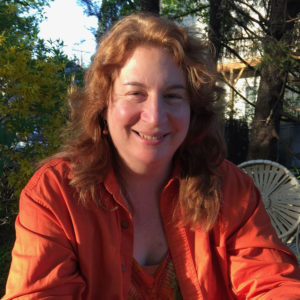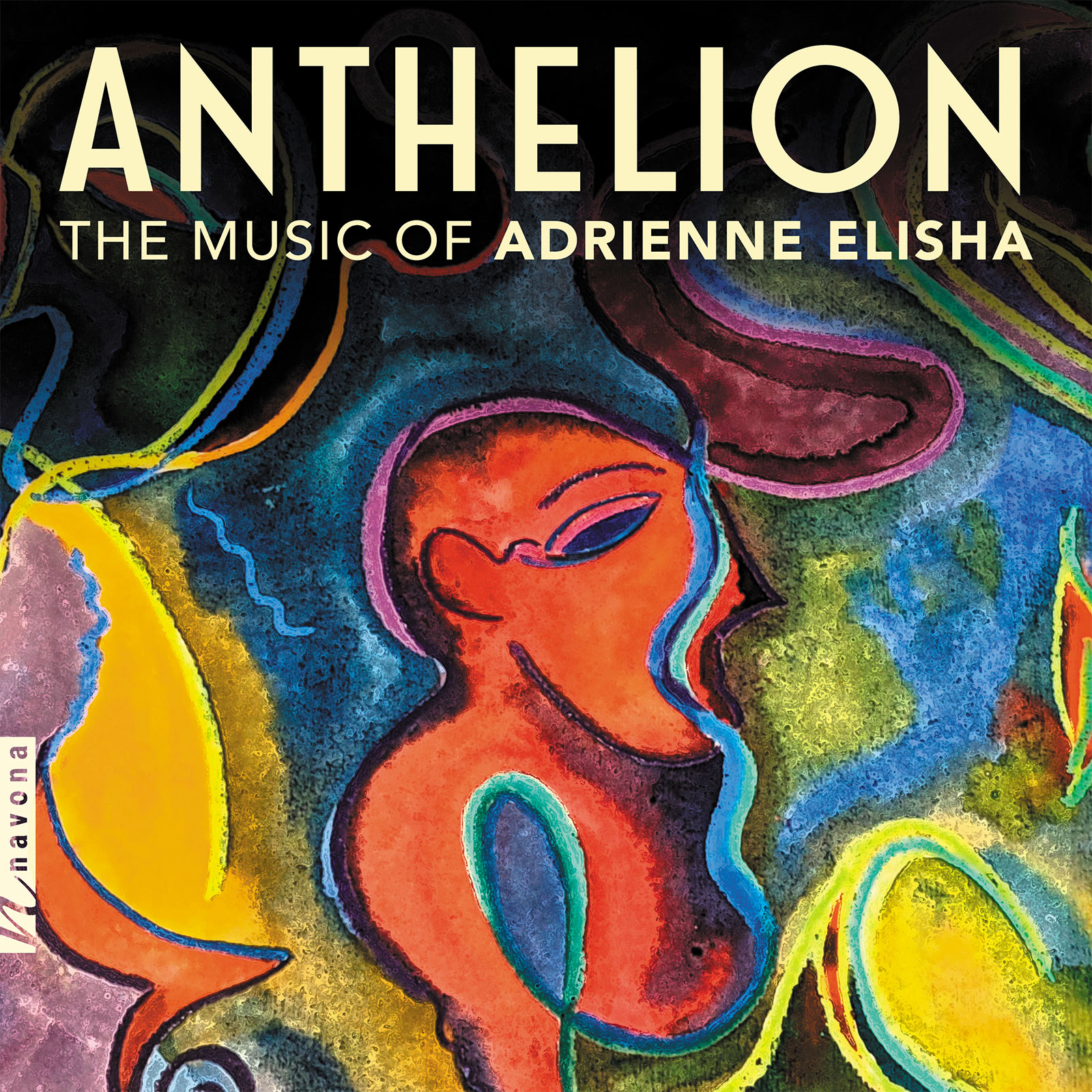Anthelion
Adrienne Elisha composer
Navona Records presents ANTHELION, showcasing favorite works from composer Adrienne Elisha (1958-2017). The works that comprise the album are technically demanding and rich in philosophical significance. Anthelion, for one, is a sonic contemplation of a natural phenomenon in which the sun’s light is projected across the sky, reflecting itself on the opposite horizon. The two-movement work, scored for flute, clarinet, violin, violoncello, percussion, and piano, expresses moments of “sonic abstraction” and continuous reverberation by way of unique instrumental timbres. In TranscenDance, on the other hand, Elisha makes a humanistic statement about the Syrian civil war, borrowing joyful melodies from Arab music and reimagining them in an orchestral setting. In this way, the music of ANTHELION is at once abstract and deeply contextual, challenging yet ultimately transcendent.
Listen
Stream/Buy
Choose your platform
Track Listing & Credits
| # | Title | Composer | Performer | |
|---|---|---|---|---|
| 01 | Anthelion: I. Sonic | Adrienne Elisha | James Baker, conductor; Barry Crawford, flute; Miranda Cuckson, violin; Joshua Gordon, cello; Jean Kopperud, clarinet; Blair McMillen, piano; Ben Paysen, percussion | 10:22 |
| 02 | Anthelion: II. Resonance | Adrienne Elisha | James Baker, conductor; Barry Crawford, flute; Miranda Cuckson, violin; Joshua Gordon, cello; Jean Kopperud, clarinet; Blair McMillen, piano; Ben Paysen, percussion | 7:34 |
| 03 | Inner Voices | Adrienne Elisha | Adrienne Elisha, viola | 6:21 |
| 04 | Harrier | Adrienne Elisha | Adrienne Elisha, viola; Jonathan Golove, cello; James VanDemark, bass | 9:44 |
| 05 | Feneketlento | Adrienne Elisha | Steven Elisha, cello | 23:01 |
| 06 | Azure | Adrienne Elisha | Chamber Orchestra of Boston | David Feltner, conductor | 12:29 |
| 07 | TranscenDance | Adrienne Elisha | Chamber Orchestra of Boston | David Feltner, conductor | 11:20 |
Anthelion
Recorded in 2011 at the Wellesley Composers Conference in Wellesley MA
Inner Voices
Recorded in 2004 at Cleveland State University in Cleveland OH
Engineer David Yost
Harrier
Recorded in 2005 at the University of Buffalo in Buffalo NY
Feneketlento
Recorded in 2004 at Cleveland State University in Cleveland OH
Engineer David Yost
Azure
Recorded in 2014 in Boston MA
Engineer Pete Dunn
TranscenDance
Recorded in 2016 in Boston MA
Engineer Pete Dunn
Cover art and album artwork by Adrienne Elisha
Executive Producer Bob Lord
Executive A&R Sam Renshaw
A&R Director Brandon MacNeil
A&R Morgan Santos
VP of Production Jan Košulič
Audio Director Lucas Paquette
Mastering Melanie Montgomery
VP, Design & Marketing Brett Picknell
Art Director Ryan Harrison
Design Edward A. Fleming
Publicity Patrick Niland, Aidan Curran
Content Manager Sara Warner
Artist Information

Adrienne Elisha
Adrienne Elisha (1958-2017), a native of Glen Cove NY, studied violin and composition at Indiana University. She earned an Artist Diploma in Viola Performance at the Cleveland Institute of Music and a doctorate in Composition at the University of Buffalo. As a performer, she specialized in the performance of contemporary music, playing in new-music ensembles such as the Cleveland Chamber Symphony, Slee Sinfonietta, as well as the Boston Modern Orchestra Project.
James Baker
Conductor and percussionist James Baker (Anthelion) serves as Music Director and Conductor of the Composers Conference at Wellesley College. A prominent performer of contemporary music, he is on the faculty of the Mannes School of Music in New York City.
Barry Crawford
Flutist Barry Crawford (Anthelion) regularly performs as a guest artist with some of the New York area’s leading ensembles, and enjoys an international career as a soloist, chamber musician, and teacher.
Miranda Cuckson
Violinist Miranda Cuckson (Anthelion) has performed as a soloist at important venues around the world, given numerous world premieres by major composers, and released 10 CD albums, mostly of contemporary music.
Steven Elisha
Cellist Steven Elisha (Feneketlento), Head of Strings and Director of Orchestras at Georgia Southern University, often appears with his wife, violinist Larisa Elisha as the Elaris Duo. His recording of his sister Adrienne Elisha’s concerto Cry of the Dove is available on Youtube.
David Feltner
Conductor David Feltner (Azure, TranscenDance) founded the Chamber Orchestra of Boston in 2001, winning praise from audiences and critics alike for his innovative programming and for his dedication to contemporary music.
Jonathan Golove
Cellist-composer Jonathan Golove (Harrier) teaches at the University at Buffalo. He has performed widely not only on the classical cello but on the electric instrument as well, and has been particularly active in the revival of the Theremin cello from the 1920s.
Joshua Gordon
Cellist Joshua Gordon (Anthelion), a member of the acclaimed Lydian String Quartet, teaches at Brandeis University, and performs widely as a soloist or in a duo with pianist Randall Hodgkinson.
Jean Kopperud
Clarinetist Jean Kopperud (Anthelion) has performed worldwide as a soloist and a chamber musician. A longtime member of the New York New Music Ensemble, she teaches at the University at Buffalo.
Blair McMillen
Pianist Blair McMillen (Anthelion) is an internationally-known expert in contemporary music. He is the co-director of the Rite of Summer music on Governors Island, and is on the faculty of both Bard College and the Mannes School of Music/The New School.
Ben Paysen
Percussionist Ben Paysen (Anthelion) is based in the San Franciso Bay area and has performed with groups such as SŌ Percussion and the San Francisco Contemporary Music Players, among others.
James VanDemark
Bassist James VanDemark (Harrier) has been on the faculty of the Eastman School of Music since 1976. He is one of the rare double-bass players to enjoy an international solo career. In 2011, he commissioned Adrienne Elisha to write the solo piece In Cantation, which was also adapted as a ballet by Rochester City Ballet in 2014.

